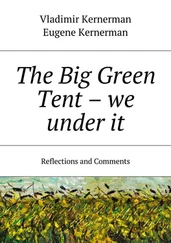Herbert Tiedemann - Babi Yar - Critical Questions and Comments
Здесь есть возможность читать онлайн «Herbert Tiedemann - Babi Yar - Critical Questions and Comments» весь текст электронной книги совершенно бесплатно (целиком полную версию без сокращений). В некоторых случаях можно слушать аудио, скачать через торрент в формате fb2 и присутствует краткое содержание. Жанр: История, на английском языке. Описание произведения, (предисловие) а так же отзывы посетителей доступны на портале библиотеки ЛибКат.
- Название:Babi Yar: Critical Questions and Comments
- Автор:
- Жанр:
- Год:неизвестен
- ISBN:нет данных
- Рейтинг книги:4 / 5. Голосов: 1
-
Избранное:Добавить в избранное
- Отзывы:
-
Ваша оценка:
- 80
- 1
- 2
- 3
- 4
- 5
Babi Yar: Critical Questions and Comments: краткое содержание, описание и аннотация
Предлагаем к чтению аннотацию, описание, краткое содержание или предисловие (зависит от того, что написал сам автор книги «Babi Yar: Critical Questions and Comments»). Если вы не нашли необходимую информацию о книге — напишите в комментариях, мы постараемся отыскать её.
Babi Yar: Critical Questions and Comments — читать онлайн бесплатно полную книгу (весь текст) целиком
Ниже представлен текст книги, разбитый по страницам. Система сохранения места последней прочитанной страницы, позволяет с удобством читать онлайн бесплатно книгу «Babi Yar: Critical Questions and Comments», без необходимости каждый раз заново искать на чём Вы остановились. Поставьте закладку, и сможете в любой момент перейти на страницу, на которой закончили чтение.
Интервал:
Закладка:
• And what must one think of authors who, when writing the right column of a page, can no longer remember what they wrote in the left column?
• For comparison, we have the sworn statement of Professor Aloshin, according to whom heavy machine guns were set up on either side of the ravine. And:
"then Russian prisoners-of-war who were stationed on either side of the ravine with shovels [...] had to throw sand over the victims."
• The victims had been herded into the ravine; the heavy machine guns were fired downward at a sharp angle - not an easy task.
• At the bottom, he said, the bodies piled up every which way - not, as Knopp describes, "in rows on the ground." From experience with the mass graves in Hamburg, for the 40,000 victims of the British terrorist attacks, we know that the prisoners-of-war would have had to shovel about 742,000 cu.ft. of sand in order to cover the victims. Given a more careful layering of the bodies, as in Katyn, there would still have been about 503,200 cu.ft. to shovel. Since the bodies were in the pit, they would either have had to dig into the embankments or to bring the sand in from outside. More work, and lots of it! Do the air photos reveal any of this? How much sand can one worker shovel per day, under such conditions?
• Where does Knopp glean his knowledge of large empty halls in which those still living spent night?[66] There were no halls at Babi Yar. And why is there not so much as one single witness for these treks - from the 'halls' back to the murder sites?
10. Professor Dr. Wolfgang Benz:[67] In the ravine
"[...] there were 3 groups of marksmen, a total of about 12 marksmen. [...] They stood behind the Jews and killed them with shots to the neck."
• Shooting in the neck was the well-known murder method of choice for the GPU, NKVD, KGB, and Stasi!
11. On February 18, 1946, the Soviet prosecutor Smirnov declared at the IMT:[68]
"In Kyiv, over 195,000 Soviet citizens were tortured to death, shot, and poisoned in the gas vans, as follows:
(1) In Baybe-yar, over 100,000 men, women, children, and old people."
• How does this version agree with the various eyewitness testimony?
• Did the Communist regime concoct these claims in order to blame its own mass murders on the Germans?
• The approximately 10,000 Ukrainians who were murdered in Vinnica by the Soviets via bullets to the neck and then thrown into mass graves[69] come to mind, as do other massacres.
12. N. F. Petrenko and N. T. Gorbacheva testified:[70]
"[...] the Germans threw babies at the breast into graves and buried them alive with their dead or wounded parents."[71]
• Evidence? Specifics re. place, date, etc.?
13. In C. Clarke's book we read:[72]
"German tanks roared through the large Jewish quarter, after the occupation, blasting every living object in sight, and then burning Jews alive in flaming buildings and killing them in woods over the mass graves excavated by the victims while some Jews were tied to trees and shot or bayoneted."
• Evidence? Witnesses?
• Time required for the victims-to-be to excavate the mass graves?
• Place? Date?
• Why the time-consuming procedure of tying to trees?
• If there was a large Jewish quarter, why were the Jews not simply ordered to gather there and led off, instead of marching them in many columns into northwestern Kyiv and producing many witnesses in the process - witnesses who, however, mysteriously were not to be found later?
14. In her book, published in 1987 in Israel, Leni Yahil wrote:[73]
"The 30,000 Jews who assembled [in Kyiv] were taken to the forest and slaughtered over the course of two days."
• Leni Yahil does not name witnesses, nor does she give an explanation and/or evidence for how it was possible to assemble and lead off more than 30,000 people within a few hours, without thousands of people noticing and potentially appearing as witnesses later.
• Yahil transfers the murder site to a forest. So it wasn't a ravine? Evidence? Air photos?
15. As noted in sections 4 and 6, the Jews of Kyiv and its environs were informed via placards that they had to assemble with all their belongings at a specific place. This placard was not ready until the day before.
This organizational point is of utmost importance and should be examined a little more closely, for the relevant considerations apply mutatis mutandis for all the various versions of the massacre.
The placard was printed in Russian, Ukrainian and German and allegedly read [translation of German text]:[7]
"All the Jews of Kyiv are to gather until 8 o'clock on Monday, September 29, 1941, at the corner of Melnik and Dokteriwski Streets (at the cemeteries). Bring your papers, money and valuables, also warm clothing etc.
Anyone failing to comply with this order, and found elsewhere, will be shot.
Anyone breaking into vacant Jewish homes or appropriating items from the same will be shot."
Fundamental questions:
• Why is no issuing authority given?
• Name and rank of the issuing commander?
• Date of issue?
Regarding the German text:
• 8 o'clock in the morning or 8 o'clock in the evening? "Until" 8 o'clock?
• The original German text was printed using 'oe', 'ae' and 'ss' instead of 'ö', 'ä' and 'ß'. Did the printer for the 6th Army not have any umlauts in his fonts?
• "Dokteriwski Street" is incorrect. The street was called 'Djegtjariwskoi', i.e., Tarburner Street.
• "Melnik Street" is incorrect. It is correctly called 'Melnikowa Street'. It is named for a Mr. Melnikow.
• "An den Friedhöfen" (the original German wording for "at the cemeteries") is incorrect German. It should read 'Bei den Friedhöfen'. Aside from that, the Russian text has only one cemetery.
• The Encyclopedia of the Holocaust[5] claims that the purpose of the order was 'resettlement'. What is the source of this insight? The placard makes no mention of this.[7]
• What is meant by "found elsewhere"? When people converge on a location from everywhere else, everywhere is "elsewhere".
• How likely is it that a military propaganda division and an army printer would do such sloppy work?
Regarding the Russian text:
• The term used for Jews ("schidy") is contemptuous Russian gutter jargon. What sort of results can one expect when even the order to assemble bodes ill? Did the Germans actually want to run the risk of having a large part of the Jews not show up at all, and go into hiding? Perhaps they even intended that in such a case they would put all armed conflict on hold, and employ their forces in locating the Jews instead...?
• Here, too, the street names are incorrect. Moreover, the declension of street and that of cemetery are both wrong.
• The Russian text specifies 8:00 a.m. No mention is made of resettlement!
• In the list of things to bring, what does "etc." mean? Did that not risk having the great Jewish population come to the gathering place loaded down with masses of baggage and horses and wagons, hand carts and baby buggies crammed full of belongings, blocking all the streets of Kyiv in the process?
Regarding the Ukrainian text:
• Again, incorrect street names, and no hint as to the purpose of the assembly.
Whoever may have been responsible for this 'order' - what were they thinking of:
• after the occupation of Kyiv, and with an anonymous placard, with name-calling and threats of execution, to order perhaps 100,000 or even more Jews to assemble literally over night and with potentially all their belongings, at a single street corner at 8 o'clock the next morning?
• How was this 'message' supposed to reach the Jews in Kyiv and its environs, shortly after the extremely destructive armed conflict?
Читать дальшеИнтервал:
Закладка:
Похожие книги на «Babi Yar: Critical Questions and Comments»
Представляем Вашему вниманию похожие книги на «Babi Yar: Critical Questions and Comments» списком для выбора. Мы отобрали схожую по названию и смыслу литературу в надежде предоставить читателям больше вариантов отыскать новые, интересные, ещё непрочитанные произведения.
Обсуждение, отзывы о книге «Babi Yar: Critical Questions and Comments» и просто собственные мнения читателей. Оставьте ваши комментарии, напишите, что Вы думаете о произведении, его смысле или главных героях. Укажите что конкретно понравилось, а что нет, и почему Вы так считаете.










